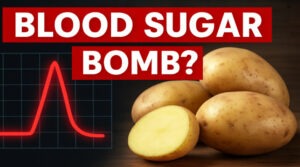Potatoes are delicious, filling, and part of many meals—but could they be silently raising your risk of diabetes? Let’s explore what science says about potatoes and their effect on blood sugar and type 2 diabetes.

Bringing Food Science to YOU & your PETS!